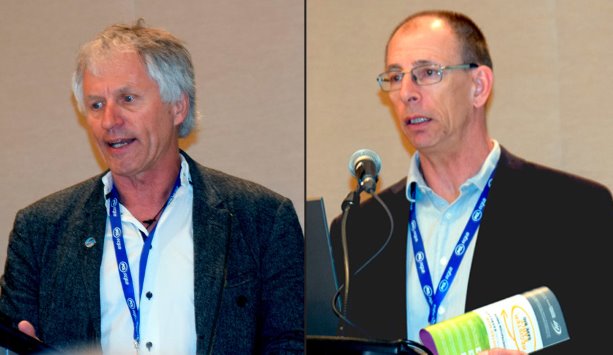Lean construction disciples Karen Chovan, Ron Cruikshank, Murray Guy and Heather Morgan brought Saskatoon-style energy to a panel presentation at the Lean Construction Institute — Canada (LCI-C) conference held in Toronto recently, delivering an anecdote-laden clinic on how to successfully launch a Community of Practice (CoP).
The panel was billed How We Kickstarted a Community of Practice and took place May 4.
CoP’s are forums where lean practices are discussed and disseminated throughout local communities. In the case of the Saskatoon CoP, it took a simple inquiry to launch what has proved to be an influential and successful club.
Chovan, principal with Saskatoon’s Lean Team Builders and Enviro Integration Strategies, recalled receiving an invitation from Guy, project manager with Integrated Designs, two years ago: "Let’s have a lean coffee."
Guy commented in an interview after the panel wrapped that since Saskatoon is a small community, the CoP leaders need to bring lots of enthusiasm and work hard for the group to be successful.
"You hear how hard it is to change culture but it works," said Guy. "You need to get that level of commitment and support. Because we are not a big community, to get together with people who are energized and have had successes, it really helps. We are a small community so we have had to reach out electronically to keep that momentum going."
Ron Cruikshank
Panelist
LCI-C’s mission statement expresses that its purpose is to foster a culture of continuous improvement in the planning, design and construction industry through the adoption of lean principles. Guy said the leadership of the Saskatoon CoP works well together to arrange speakers, take site visits and offer programs with that goal of continuous improvement among lean supporters always top of mind.
"As far as the four people who have been in our panel, I hardly knew Karen but now we are great friends and it is very energizing, especially when fixing an industry that needs fixing," he said.
"I have created business relationships with Karen and Ron where we go do some training and who knows where that might take us into the future. You start to reach out to other people who are interested in the lean world."
Morgan, the fourth panellist, who is an interior design and interior construction market manager for DIRTT, expanded upon that idea to include making plans for upcoming meetings, up to a year ahead, as a means of setting a direction for growth and where the CoP wants to go.
"There are a lot of people out there who are teaching or learning about it," she said. "It does not really belong to anyone, it is about sharing."
As with many business associations, CoP meetings often involve sharing information about relevant associations and websites, new books, technologies, practices and special events. The Saskatoon group is in touch with other Canadian CoP groups — it is mainly a western movement so far, with other CoP’s in Regina, Edmonton and Victoria in addition to the lone Ontario group in Toronto.
Chovan said their group uses its online platform to promote lean coffee groups and plan events, commenting and chatting via social media and documenting its lean coffee dialogues. It’s not of much value to have discussions if there are not documents to record progress and ideas, said Chovan.
During the panel discussion, Chovan mentioned This is Lean, an efficiency philosophy and website, and The Culture Challenge, a U.K website, as influential sources of ideas. The Saskatoon CoP also has its own Lean Talks, modelled on Ted Talks, as a useful platform for workshopping ideas.
Another website, leancoffee.org, is useful for developing different CoP meeting ideas, said Chovan.
"There are numerous communities who practise out there. If you click through these communities, some are public and you can see what others are doing," she said.
Another tool is study action teams that discuss impactful books chapter by chapter, with a recent review of The High Velocity Edge by Steven Spear being a revelation, said Cruikshank, a principal at Lean Team Builders.
Cruikshank also said arranging hands-on project simulations has proved valuable at the Saskatoon CoP meetings.
"There have been a number of simulations that we can introduce people to and that’s where we get that aha moment," he said.
"Just thinking outside of the box and seeing what tools are out there is handy."
Looking ahead to the future, Guy said the CoP movement should cast a wide net, with as many different relevant disciplines as possible invited. Already among the 75 or so members of the Saskatoon CoP are property and facilities managers, owners, construction and mining professionals, vendors, architects and engineers.
"We had someone from the City of Saskatoon that is now coming in, because they had some projects that could have been leaner and our group has reached out to that person," said Guy.
And reaching out can mean studying other movements to consider synergies. It is logical for green and lean to come together, Guy suggested, because if a project is lean it is much more efficient, including energy efficiency.











Recent Comments
comments for this post are closed